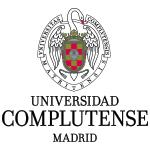Day-old chicks are a source of antimicrobial resistant bacteria for laying hen farms
Investigación publicada en Veterinary Microbiology
1 de marzo de 2019
Antimicrobial resistant bacteria are rarely detected in laying hens and the objective of this longitudinal study was to test day-old chick as a source. Four different commercial batches raised on the same farm were monitored from day-old chick to laying hens using Escherichia coli as a model. Ten colonies from each of the eight samplings per batch were tested for antimicrobial susceptibility using 14 antimicrobials.
Overall (313 isolates), higher resistance percentages were detected for tetracycline (26.8%), followed by sulphonamides (16.3%), ampicillin (16.0 %) and quinolones (10.9% and 9.3% for ciprofloxacin and nalidixic acid, respectively). Resistance percentages of bacteria from day-old chicks were higher than those of pullets and hens (p < 0.05) for tetracycline, sulphonamides, trimethoprim and chloramphenicol.
Forty different phenotypic resistance profiles were detected, led by fully susceptible (182 isolates; 58.1%), and followed by single tetracycline (28 isolates; 8.9%) and ciprofloxacin/ nalidixic acid (11 isolates; 3.5%) profiles.
By whole-genome sequencing, 17 genes and mutations of five chromosomal genes related to resistance were detected, the most frequent being tetA, blaTEM-1B and sul1.
Using multilocus sequencing analysis, 58 different MLST types were detected, most of them only in a particular sample. The ST155 (27/142) was the most frequently detected, followed by ST10 (19/142) and ST48 (9/142).
The fate on the farm of the detected E. coli populations in old-day chicks was not clear, but our data suggest that they did not remain in the predominant faecal population of pullets and laying hens
Moreno MA., Garcia-Soto S., Hernandez M., Barcena C., Rodriguez-Lazaro D., Ugarte-Ruiz M. y Dominguez L..
 | Servicio de Zoonosis de Transmisión Alimentaria y Resistencia a Antimicrobianos (ZTA). Centro de Vigilancia Sanitaria Veterinaria (VISAVET). Universidad Complutense (UCM). |
 | Departamento de Sanidad Animal. Facultad de Veterinaria. Universidad Complutense (UCM). |
 | Laboratorio de Biología Molecular y Microbiología. Instituto Tecnológico Agrario de Castilla y León (ITACyL). |
| Unidad de Microbiología. Departamento de Biotecnología y Ciencia de los Alimentos. Universidad de Burgos (UBU). | |
